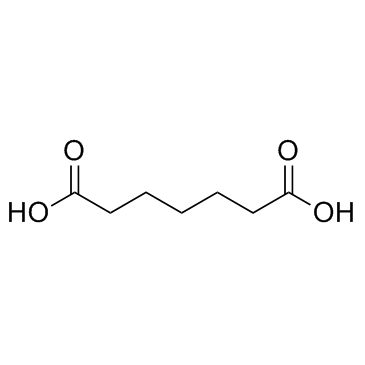Azelaic acid--biochemistry and metabolism.
S Passi, M Picardo, G Mingrone, A S Breathnach, M Nazzaro-Porro
Index: Acta Derm. Venereol. Suppl. (Stockh.) 143 , 8-13, (1989)
Full Text: HTML
Abstract
Medium chain length dicarboxylic acids (DA) from C8 to C13 are competitive inhibitors of tyrosinase in vitro. The introduction of electron acceptor groups or electron donor groups into the 2 and/or the 8 position of the molecule enhances or reduces respectively the inhibitory effects of DA. In addition to tyrosinase, DA can reversibly inhibit thioredoxin reductase, NADPH cytochrome P450 reductase, NADH dehydrogenase, succinic dehydrogenase and H2CoQ-Cytochrome C oxidoreductase. Among DA, azelaic acid (AA, C9 dicarboxylic acid) is extensively used because: 1) it is much cheaper than other DA; 2) it has no apparent toxic or teratogenic or mutagenic effect; 3) when administered perorally to humans, at the same concentrations as the other DA, it reaches much higher serum and urinary concentrations. Serum concentrations and urinary excretion obtained with intravenous or intra-arterial infusions of AA are significantly higher than those achievable by oral administration. Together with AA, variable amounts of its catabolites, mainly pimelic acid, are found in serum and urine, indicating an involvement of mitochondrial beta-oxidative enzymes. Short-lived serum levels of AA follow a single 1 h intravenous infusion, but prolonging the period of infusion with successive doses of similar concentration produces sustained higher levels during the period of administration. These levels are consistent with the concentrations of AA capable of producing a cytotoxic effect on tumoral cells in vitro. AA is capable of crossing the blood-brain barrier: its concentration in the cerebrospinal fluid is normally in the range of 2-5% of the values in the serum.
Related Compounds
| Structure | Name/CAS No. | Molecular Formula | Articles |
|---|---|---|---|
 |
Pimelic acid
CAS:111-16-0 |
C7H12O4 |
|
Age-related reference values for urinary organic acids in a ...
1994-06-01 [Clin. Chem. 40(6) , 862-6, (1994)] |
|
Concentrations of riboflavin and related organic acids in ch...
2000-04-01 [Am. J. Clin. Nutr. 71(4) , 978-86, (2000)] |
|
The molecular species composition of individual diacyl phosp...
1982-10-14 [Biochim. Biophys. Acta 713(1) , 73-9, (1982)] |
|
Pattern of aliphatic dicarboxylic acids in uremic serum incl...
1979-11-15 [Clin. Chim. Acta 99(1) , 71-83, (1979)] |
|
The analysis of thiodiglycollic acid by selected ion monitor...
1986-04-15 [Clin. Chim. Acta 156(1) , 85-90, (1986)] |